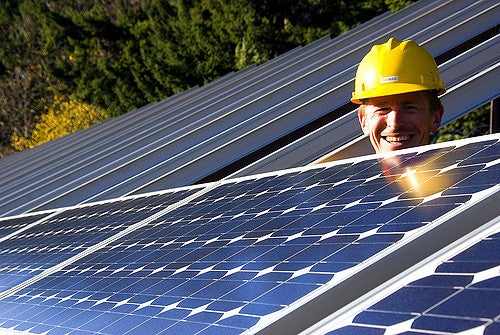For a region that is very vulnerable to climate change, Latin America remains highly dependent on fossil fuels. Around 40% of the region’s energy generation still comes from oil, natural gas, and coal. Moreover, supporting fossil fuels is costly to governments. According to a paper by the International Monetary Fund, the average country in the region spends around 1% of its GDP on fossil fuel subsidies and a few countries spend over 6%. All this, despite some of the world’s greatest renewable energy resources, including immense potential in solar, wind, and geothermal energy.
The good news is that the region is beginning to embrace its renewables potential. In the five years prior to the Paris Climate Summit in 2015, governments created new regulatory systems, renewable energy targets and special power auctions to promote alternative energy. They offered tax breaks and feed-in tariffs and set the stage for some impressive surges in wind and solar capacity.
Consider recent advances in Mexico. The country has made a concerted effort to advance aggressive climate-change goals and to introduce competition in the electricity sector, which had previously precluded private investment in power generation.
Mexico’s energy reform began with a 2012 climate-change law that committed the country to get 35% of its energy generation from renewable sources by 2024. It gathered force with the Electrical Industry Act, signed in August 2014, which dismantled the monopoly held by the state Federal Electricity Commission (CFE) and allowed independent companies to generate and sell energy on a wholesale market, attracting foreign investment and expertise and introducing real competition.
Another innovation were rules to create a market in clean energy certificates and corresponding regulations that large industry players get at least 5% of their energy from clean sources by 2018. These certificates, issued to clean energy producers, can be sold to electricity producers and large electricity consumers dependent on fossil fuels, who would otherwise be fined if they did not meet clean energy targets.
The policy reform is already paying off, with the solar sector a prime example. That sector until recently was in its infancy, despite spectacular potential. But last year developers of solar PV emerged as the big winners in two independent power auctions, outbidding other forms of energy and winning almost 4 gigawatts (GW) of generation capacity, enough to power around 1 million households. Much of that will come online as soon as 2018 and will ultimately increase the nation’s solar capacity more than tenfold from around 270 megawatts (MW) today. And it is likely to be just the beginning. According to Guillermo Zuñiga, commissioner of Mexico’s Energy Regulatory Commission, Mexico is positioned to experience a 25-fold increase in solar capacity in coming years.
Mexico still gets the overwhelming majority of its energy from fossil fuels. But as a result of the policy advances – and significant drops in the cost of renewable technologies – investments in clean energy, particularly solar and wind, have soared. Between 2014-2015, investment in renewable energy in Mexico doubled to $4 billion, and the nation entered the ranks of the world’s 10 largest renewable energy markets.
Such progress could be the wave of the future. Strong government backing for clean energy, including new regulatory frameworks and financial support have helped spur significant gains throughout the region. As discussed in a recent report by the International Renewable Energy Agency, countries like Chile and Brazil that like Mexico liberalized their power sectors, have become especially attractive destinations for renewable energy investment, and are also among the world’s top ten renewable energy markets in 2015.
Still, the continued dependence on fossil fuels for both energy production and transport continues to be a concern for a region that is both vulnerable to climate change and has expressed a strong desire to move towards renewable energy. With primary energy demand expected to rise 110% between 2000-2040, according to the International Energy Agency, the region still has a long way to go in diversifying its energy supply.
This will require more of the kind of measures that Mexico has put into place. And, with hydropower ever less reliable because of climate change, it will require a growing exploitation of the region’s immense solar, wind and geothermal potential. Latin America and the Caribbean have enough renewable resources to cover all its electricity needs, according to an IDB study. The region can give up its addiction to fossil fuels. But building on already considerable advances will require ever greater will and creativity.


Leave a Reply